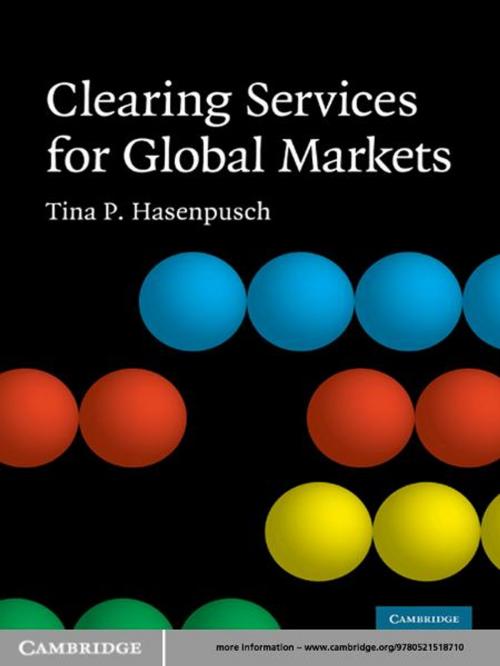Clearing Services for Global Markets
A Framework for the Future Development of the Clearing Industry
Business & Finance, Finance & Investing, Finance, Nonfiction, Reference & Language, Law| Author: | Tina P. Hasenpusch | ISBN: | 9780511699672 |
| Publisher: | Cambridge University Press | Publication: | September 24, 2009 |
| Imprint: | Cambridge University Press | Language: | English |
| Author: | Tina P. Hasenpusch |
| ISBN: | 9780511699672 |
| Publisher: | Cambridge University Press |
| Publication: | September 24, 2009 |
| Imprint: | Cambridge University Press |
| Language: | English |
Clearing forms the core part of a smooth and efficiently functioning financial market infrastructure. Traditionally, it has been provided by clearing houses, most of which today act as a 'central counterparty' (CCP) between the two sides of a trade. The rapid growth of cross-border trading has sparked discussion on the most efficient industry structure - particularly in Europe and the US. At the heart of this discussion lies the question of whether the implementation of a single clearing house creates greater benefits than a more competitive but interlinked market structure. This is the starting point for this book, which analyses the efficiency of clearing and clearing industry structure. Along with clear-cut definitions and a concise characterisation and descriptive analysis of the clearing industry, the book determines the efficiency impact of various cross-border integration and harmonisation initiatives between CCPs. This serves to identify the most preferable future structure for the clearing industry.
Clearing forms the core part of a smooth and efficiently functioning financial market infrastructure. Traditionally, it has been provided by clearing houses, most of which today act as a 'central counterparty' (CCP) between the two sides of a trade. The rapid growth of cross-border trading has sparked discussion on the most efficient industry structure - particularly in Europe and the US. At the heart of this discussion lies the question of whether the implementation of a single clearing house creates greater benefits than a more competitive but interlinked market structure. This is the starting point for this book, which analyses the efficiency of clearing and clearing industry structure. Along with clear-cut definitions and a concise characterisation and descriptive analysis of the clearing industry, the book determines the efficiency impact of various cross-border integration and harmonisation initiatives between CCPs. This serves to identify the most preferable future structure for the clearing industry.















